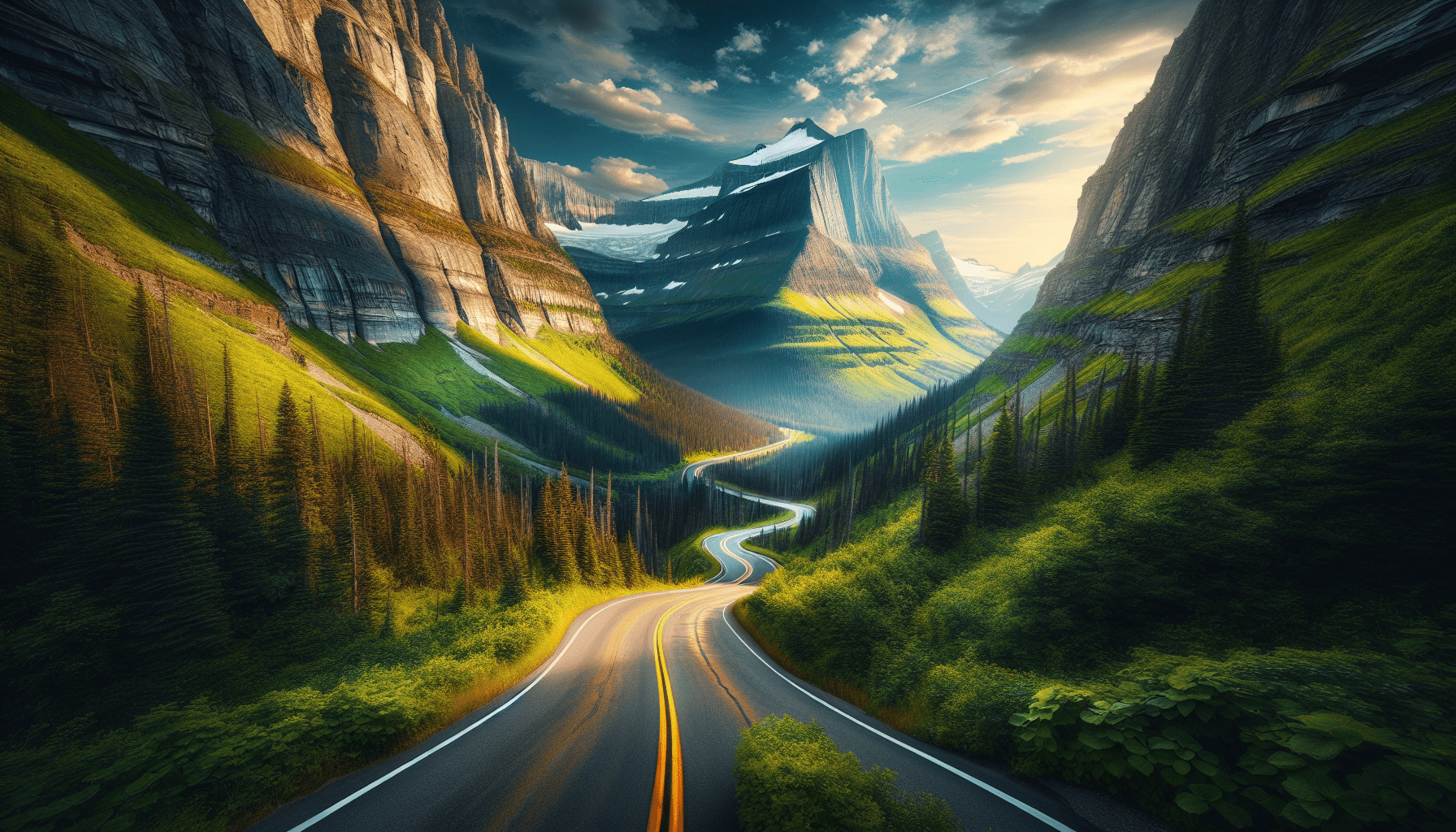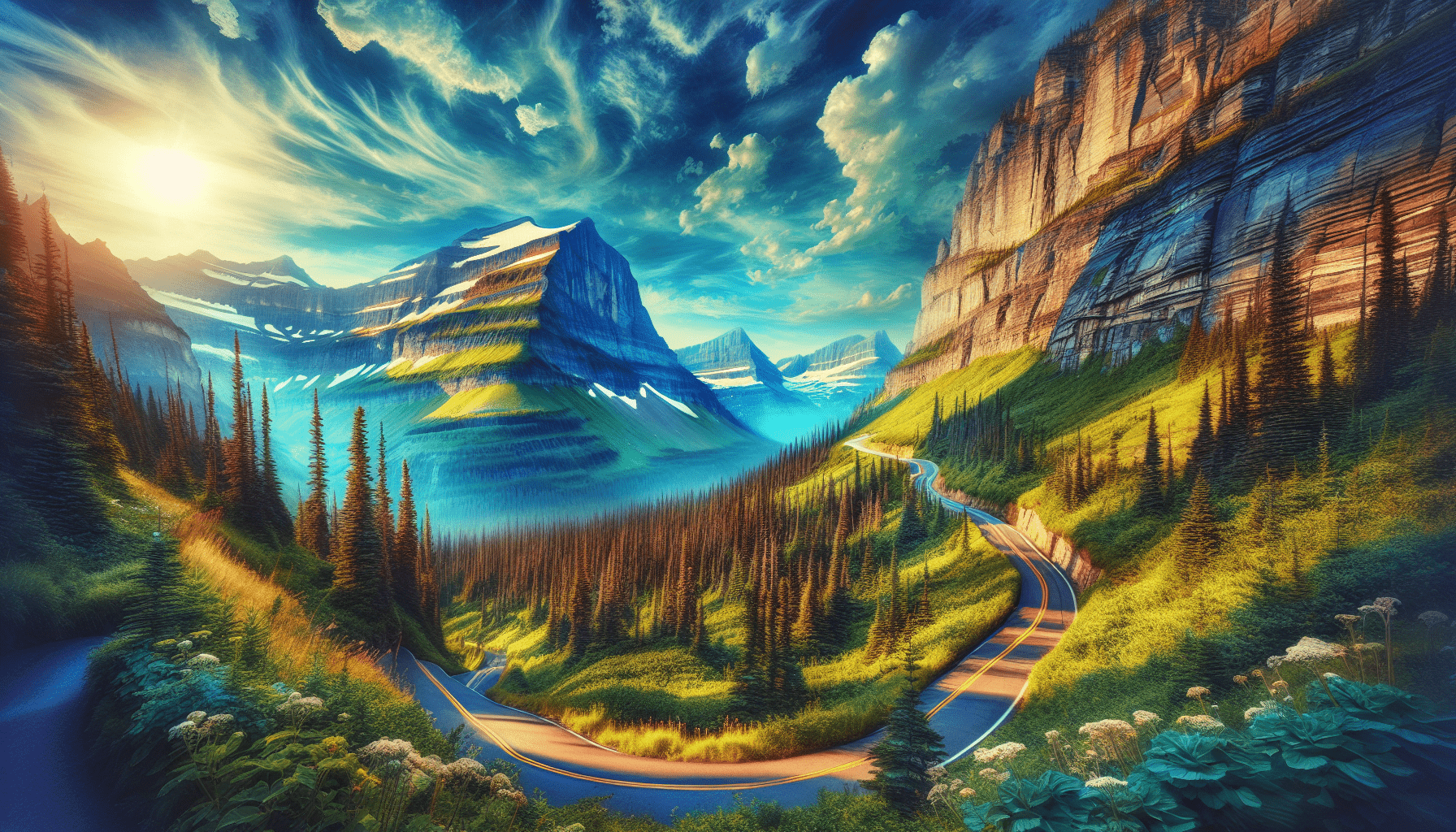travel inspira Luggage Scale, Portable Digital Hanging Baggage Scale for Travel, Suitcase Weight Scale with Rubber Paint, 110 Pounds, Battery Included
$9.99 (as of December 22, 2024 21:47 GMT +00:00 - More infoProduct prices and availability are accurate as of the date/time indicated and are subject to change. Any price and availability information displayed on [relevant Amazon Site(s), as applicable] at the time of purchase will apply to the purchase of this product.)As you prepare for an unforgettable adventure on Going-to-the-Sun Road in Montana’s Glacier National Park, there are a few key things you should keep in mind. This iconic 50-mile stretch offers awe-inspiring views and the exhilarating experience of driving through one of nature’s most breathtaking landscapes. However, the road is also renowned for its potential hazards, such as falling rocks and snowfields. This summer, the National Park Service announced its opening from both the West Glacier and St. Mary entrances. Be sure to secure a reservation if you plan to enter from the west during peak hours. Once you’re in, the stunning scenery and the chance to spot wildlife like grizzly bears and bighorn sheep will make your visit truly memorable. Have you ever dreamt of taking a road trip through some of the most breathtaking scenery in North America? If so, Going-to-the-Sun Road in Montana’s Glacier National Park might be calling your name. This iconic drive offers jaw-dropping views, diverse wildlife, and the chance to experience nature in its rawest form. However, before you rev up your engine and hit the road, there are a few things you should know to make the most of your adventure. So, buckle up, and let’s dive into what you need to know before exploring Going-to-the-Sun Road.

Shop These Accessories for a Comfortable Trip
The Magic of Going-to-the-Sun Road
A Scenic Wonderland
Going-to-the-Sun Road spans approximately 50 miles through Glacier National Park, showcasing stunning vistas, towering peaks, and cascading waterfalls. From lush forests to alpine meadows, the diversity of landscapes is truly awe-inspiring. If nature’s grandeur captivates you, this road trip will be an unforgettable journey.
A Brief History
Constructed in the early 20th century and completed in 1933, Going-to-the-Sun Road is an engineering marvel. Named after a peak on the Continental Divide, it was the first road to provide automobile access through the heart of Glacier National Park. The road represents a blend of beauty and human ingenuity, offering a unique opportunity to explore this rugged wilderness.
Planning Your Visit
When to Go
Timing is crucial for visiting Going-to-the-Sun Road. The road is typically open from late June to early October, weather permitting. Snowfall and adverse weather conditions can significantly impact access, so it’s wise to check the National Park Service (NPS) website for current road status before you go.
Reservation Requirements
From June 22 to September 8, 2024, you’ll need a reservation to enter the West Glacier entrance between 6:00 a.m. and 3:00 p.m. This system helps manage the influx of visitors during peak times, ensuring everyone’s safety and preserving the park’s natural beauty. Outside these hours, the park is open 24 hours a day, giving you some flexibility in planning your visit.
| Time Period | Reservation Required? |
|---|---|
| June 22 – September 8 | Yes, 6:00 a.m. – 3:00 p.m. |
| Other Dates / Hours | No |
Shop These Accessories for a Comfortable Trip
Navigating the Road
Driving Conditions
Going-to-the-Sun Road can be a challenging drive. The road is narrow with steep drop-offs, and there are numerous switchbacks. Always stay focused and watch for wildlife, cyclists, and other hazards. Speed limits are strictly enforced, so take your time to enjoy the scenery safely.
Visitor Facilities
Visitor centers at Apgar and Logan Pass offer parking, restrooms, and informative exhibits. These centers are great starting points for your adventure. Logan Pass Visitor Center is particularly special, sitting atop the Continental Divide and offering some of the best views in the park.
Must-See Sights
Logan Pass
Logan Pass, at 6,646 feet above sea level, is the highest point on Going-to-the-Sun Road. The pass is a hub for various trails, including the popular Hidden Lake Overlook. Make sure to bring your camera—this spot is perfect for capturing panoramic views of the surrounding peaks.
Weeping Wall
As you drive along the road, you’ll encounter the Weeping Wall, a section where water seeps through the rock face, creating a mesmerizing curtain of waterfalls. It’s particularly stunning in late summer when the snowmelt is at its peak.
Saint Mary Lake
Located at the eastern end of the road, Saint Mary Lake is the second largest lake in Glacier National Park. Its deep blue waters, framed by jagged mountains, create a postcard-perfect scene. Trails around the lake offer the chance to stretch your legs and soak in the tranquility.

Preparing for the Adventure
What to Pack
Being well-prepared makes all the difference. Here’s a quick checklist of essentials:
- Clothing: Dress in layers. Weather in the park can change rapidly, especially at higher elevations.
- Food and Water: There are limited dining options in the park, so pack snacks and plenty of water.
- Navigation: GPS and maps are helpful, but always have a physical map as backup. Cell service is spotty.
- Safety Gear: First aid kit, flashlight, and a multi-tool can be lifesavers in emergencies.
Vehicle Preparation
- Fuel: Fuel up before entering the park. There are no gas stations along Going-to-the-Sun Road.
- Brakes: Ensure your vehicle’s brakes are in excellent condition. The road’s steep descents can be tough on brakes.
- Emergency Kit: Always have a basic emergency kit in your car, including jumper cables, tire repair kits, and road flares.
Safety Tips
Wildlife Awareness
Glacier National Park is home to diverse wildlife, including grizzly bears and bighorn sheep. Always maintain a safe distance from wildlife and never feed or approach them.
Weather Preparedness
Weather can change swiftly. Even in summer, elevations over 5,500 feet can be chilly. Be prepared for rain, snow, or sudden temperature drops, and always check the weather forecast before your trip.
Road Conditions
Falling rocks, snowfields, and snow overhangs are common hazards. The NPS does a fantastic job of maintaining the road, but conditions can still be unpredictable. Drive slowly and be prepared for sudden stops.
Beyond the Road: Exploring Glacier National Park
Hiking Trails
With over 700 miles of hiking trails, Glacier National Park offers something for every hiker. Here are a few recommendations:
- Highline Trail: Starting from Logan Pass, this trail offers spectacular views and diverse wildlife sightings.
- Trail of the Cedars: This easy, accessible trail near the park’s west entrance meanders through ancient cedar trees.
- Grinnell Glacier: This challenging trail rewards hikers with stunning views of Grinnell Glacier and the surrounding landscape.
Camping Options
Camping in Glacier National Park is an excellent way to immerse yourself in nature. The park offers both reservation and first-come, first-served campgrounds. Popular campgrounds include:
- Apgar Campground: Located near the west entrance, it’s the largest campground in the park and offers amenities like water and restrooms.
- Many Glacier Campground: This campground is ideal for those wanting to explore the park’s eastern section, offering beautiful scenery and plenty of wildlife.
- St. Mary Campground: Near the park’s east entrance, this campground provides easy access to the Going-to-the-Sun Road and St. Mary Lake.
Boat Tours
For a different perspective of the park, consider taking a boat tour. Glacier Park Boat Company offers various tours on several of the park’s lakes, providing insights into both natural history and park lore. It’s a relaxing way to soak in the surroundings and learn more about this remarkable place.
Ranger Programs
The National Park Service offers ranger-led programs throughout the park. These programs range from guided hikes to evening talks about the park’s flora, fauna, and history. Participating in a ranger program can enrich your understanding and appreciation of Glacier National Park.
Insider Tips for a Memorable Trip
Best Times for Photography
If you’re a photography enthusiast, the golden hours around sunrise and sunset offer the best lighting. Early mornings can also be less crowded, giving you pristine views and opportunities to capture the park’s beauty.
Crowds and Solitude
Going-to-the-Sun Road can get quite busy, especially during peak season. For a quieter experience, start your day early or visit the park in late September. Less crowding means more chances to connect with nature.
Hidden Gems
While the main sights are spectacular, don’t be afraid to explore some of the park’s lesser-known areas. Places like Bowman Lake and Two Medicine are equally breathtaking and often less crowded.
Respecting the Park
Leave No Trace
Glacier National Park is a pristine wilderness, and it’s our responsibility to keep it that way. Follow Leave No Trace principles by packing out all trash, respecting wildlife, and staying on designated trails.
Cultural Respect
The land that is now Glacier National Park is culturally significant to various Native American tribes, including the Blackfeet, Salish, and Kootenai. Be mindful and respectful of these cultural sites and any interpretive signs providing historical context.
Conclusion
Going-to-the-Sun Road is more than just a drive; it’s a journey through some of the most stunning landscapes Mother Nature has to offer. With the right preparation, you can safely enjoy this iconic road trip and all the wonders of Glacier National Park. So, get your reservations in order, pack your bags, and get ready for an adventure that you’ll remember for a lifetime. Happy travels!
Shop These Accessories for a Comfortable Trip






